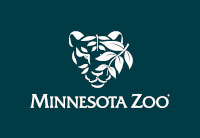Turtles, frogs, and snakes-together they’re called “herps.” They rely on the environment around them-the sun, water, or ground-to generate the heat that every creature needs to survive. Despite the cold, Minnesota’s relatively clean water and unpolluted air support a surprisingly high number of herps.
What They Eat
Herps eat a variety of foods-plants, animals, fruit, insects, or a combination of foods. Because they are “cold-blooded” (maintain a low body temperature), they are well adapted to survive in environments where food is sometimes scarce.
Where They Live
Most of Minnesota’s amphibians and turtles live in or near water, while the majority of our snakes live on land. Amphibians are less tolerant of dry conditions, and are generally less abundant in western Minnesota. Reptiles don’t adapt well to cold, so fewer species are found in northern Minnesota.
What They Do
To be active and digest their food, reptiles and amphibians must remain warm. That’s why you’ll often see them basking on rocks in the sun during cool parts of the day, and retreating to the shade when temperatures get too warm.
How They’re Doing
Here in Minnesota, our large population of herps has declined in recent years. Today, about half of our species of reptiles and amphibians are classified as “wild and rare.”
Where in the World
North America
Habitat
River, Lake, Wetland Temperate Forest/Taiga Prairie/Steppe
Conservation Status
Wood Turtle
Blanding’s Turtle
Habitat
River, Lake, Wetland Temperate Forest/Taiga Prairie/Steppe
Taxonomic Category
Amphibian/Reptile
Where at the Zoo
Get a closer look at Minnesota’s herps by visiting the Martiz Family Lodge at the head of the Medtronic Minnesota Trail. Our large 1,000-gallon tank is home to map, Blanding’s, soft-shelled, and painted turtles. Two smaller exhibits house mudpuppies, garter snakes, and leopard frogs, and we also have a small terrarium featuring tree frogs and salamanders.
Reptiles and Amphibians generally on exhibit:
| Turtles | Frogs & Toads |
| painted | gray tree frog |
| Blanding’s | American toad |
| ouachita map | wood frog |
| soft shell | northern leopard frog |
| Snakes | Salamanders/Mudpuppies |
| common garter snake | tiger salamander |
| mudpuppy |
- When all else fails, hognose snakes will resort to “playing dead.” They flop over onto their backs, open their mouths, and remain motionless until out of danger.
- Turtles have been around since at least the age of the dinosaurs. Over the past 200 million years they have evolved into hundreds of species adapted to habitats around the world.
- Frogs sink their bulging eyes into their mouth cavities when swallowing prey to help mash food and push it down their throats.
- The sensitive skin of a snake is covered in scales. Contrary to popular belief, it doesn’t feel slimy, but has a smooth, dry texture.
- Herpetology is the study of reptiles and amphibians. Reptiles include turtles, snakes, and lizards. Amphibians include frogs, toads, and salamanders.
Loss of habitat is the greatest threat to amphibian and reptile populations in Minnesota. Because herps are so sensitive to the world around them, scientists call them “bio-indicators.” Their health often reflects the quality of their environment.
Things you can do
Don’t release unwanted pets or animals from school projects into the wild. Doing so may introduce species that can someday affect Minnesota animals and their habitats.
If you find a frog, turtle, snake, or salamander, watch it, learn from it, and then put it back where you found it.
In Minnesota, female turtles are frequently hit by cars when crossing roads to nesting sites (usually in May and June). If you see a turtle crossing the road, helping it across might save its life. First, make sure it’s safe to help-don’t put yourself in danger. Turtles know where they are going, so always move them in the same direction they are traveling (this is not always toward water).
Minnesota’s Deformed Frogs
In 1995, teens on a biology field trip in Henderson, Minnesota documented a surprisingly large number of malformed frogs. Their find attracted world-wide attention. Since then, mutant frogs have been found all over the world.
What’s happening? Is it pollution, parasites, or increased ultraviolet light? Scientists have recently determined that it may be a combination of all three. A common weed killer runs into streams and ponds where it kills floating algae. This allows more light to reach the bottom, benefiting parasites that then infest the frogs in larger numbers, causing an increase in deformations.










